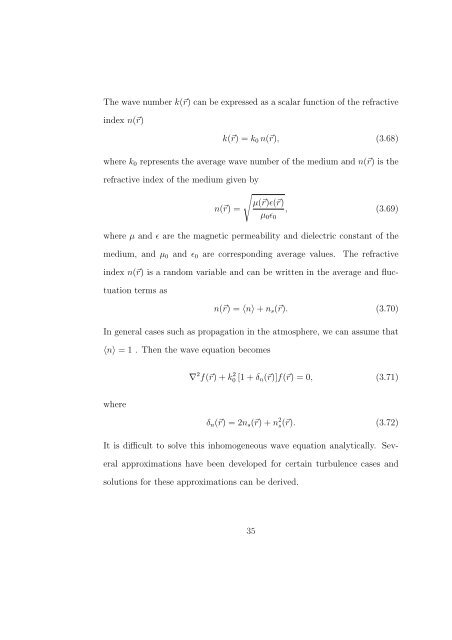OPTIMAL BEAM FORMING FOR LASER BEAM PROPAGATION ...
OPTIMAL BEAM FORMING FOR LASER BEAM PROPAGATION ...
OPTIMAL BEAM FORMING FOR LASER BEAM PROPAGATION ...
You also want an ePaper? Increase the reach of your titles
YUMPU automatically turns print PDFs into web optimized ePapers that Google loves.
The wave number k(⃗r) can be expressed as a scalar function of the refractiveindex n(⃗r)k(⃗r) = k 0 n(⃗r), (3.68)where k 0 represents the average wave number of the medium and n(⃗r) is therefractive index of the medium given by√µ(⃗r)ɛ(⃗r)n(⃗r) = , (3.69)µ 0 ɛ 0where µ and ɛ are the magnetic permeability and dielectric constant of themedium, and µ 0 and ɛ 0 are corresponding average values.The refractiveindex n(⃗r) is a random variable and can be written in the average and fluctuationterms asn(⃗r) = 〈n〉 + n s (⃗r). (3.70)In general cases such as propagation in the atmosphere, we can assume that〈n〉 = 1 . Then the wave equation becomes∇ 2 f(⃗r) + k 2 0 [1 + δ n (⃗r)]f(⃗r) = 0, (3.71)whereδ n (⃗r) = 2n s (⃗r) + n 2 s(⃗r). (3.72)It is difficult to solve this inhomogeneous wave equation analytically. Severalapproximations have been developed for certain turbulence cases andsolutions for these approximations can be derived.35
















